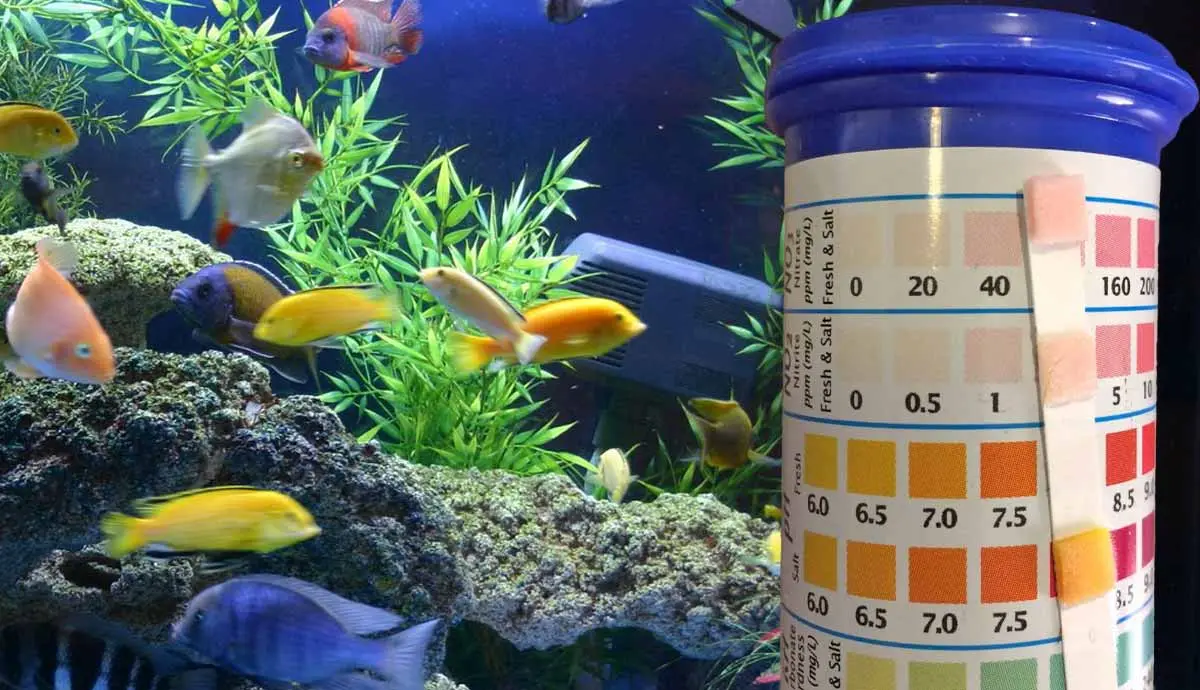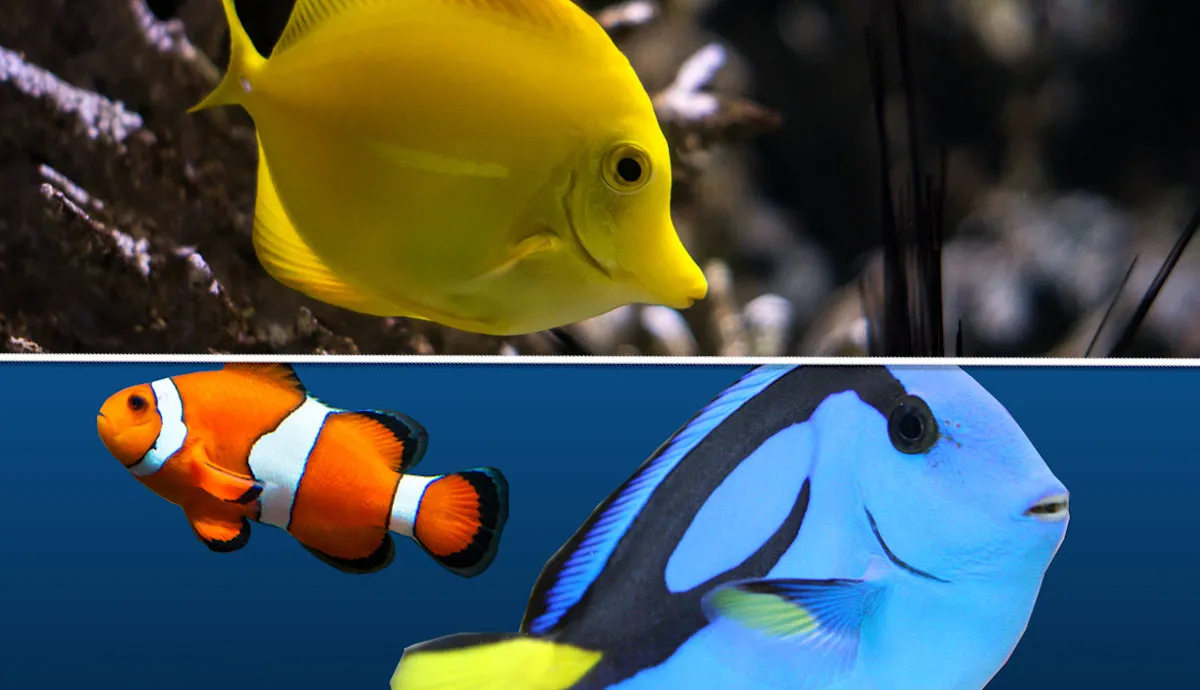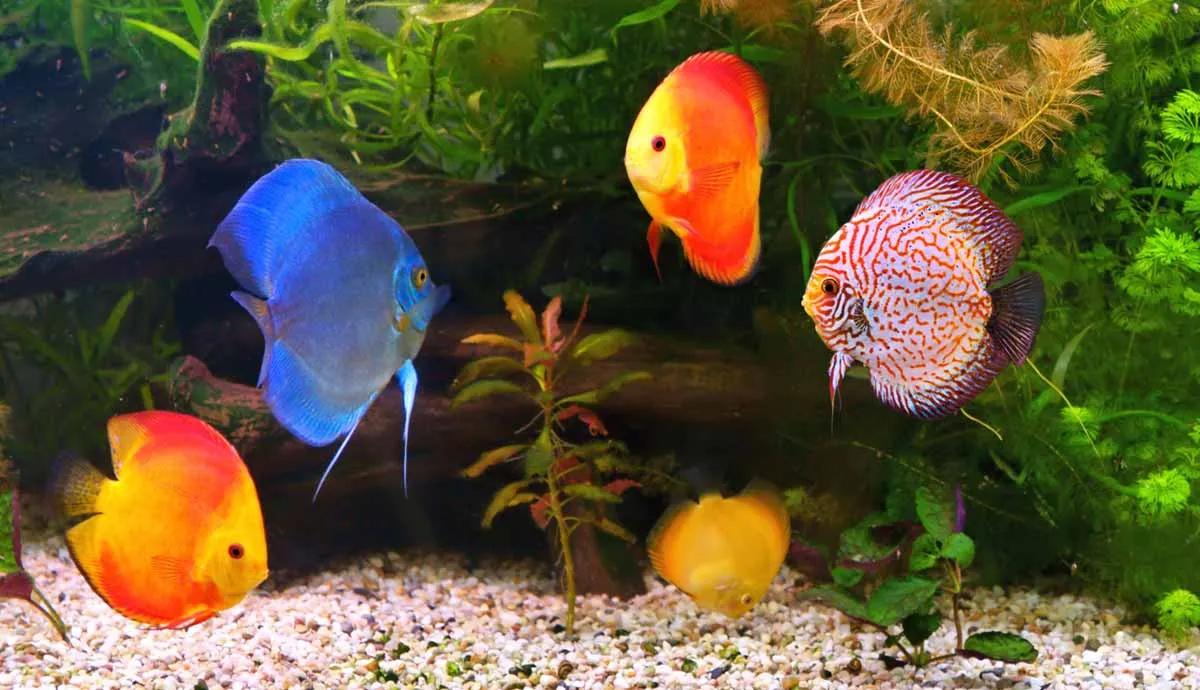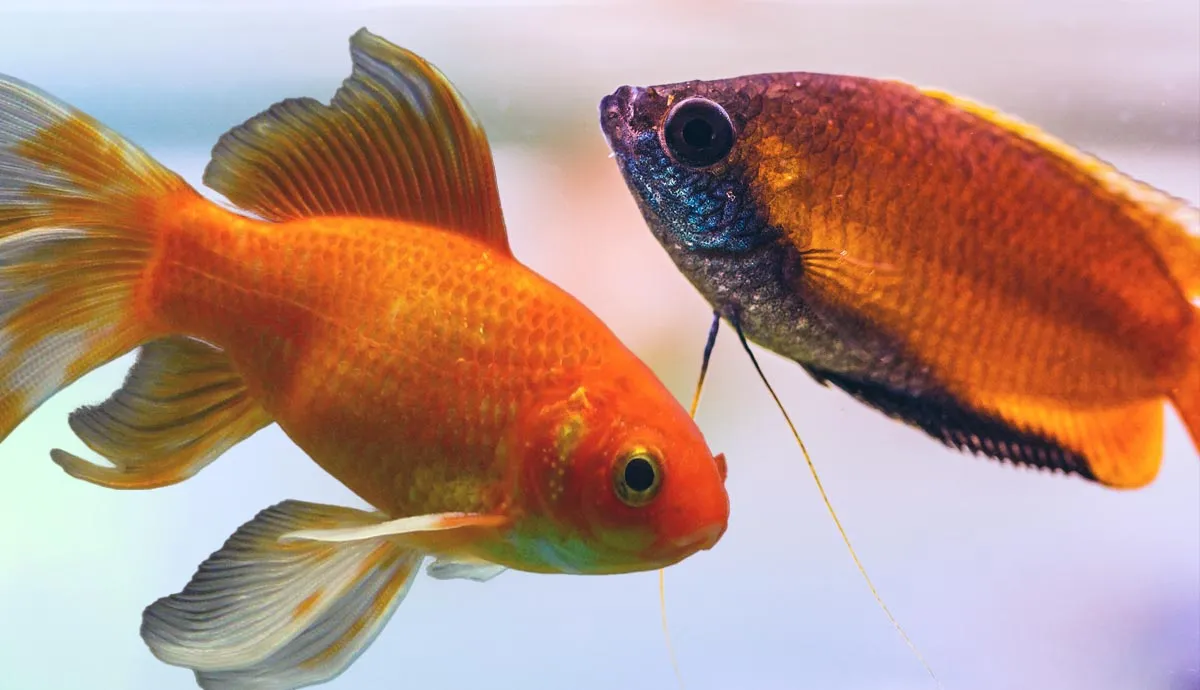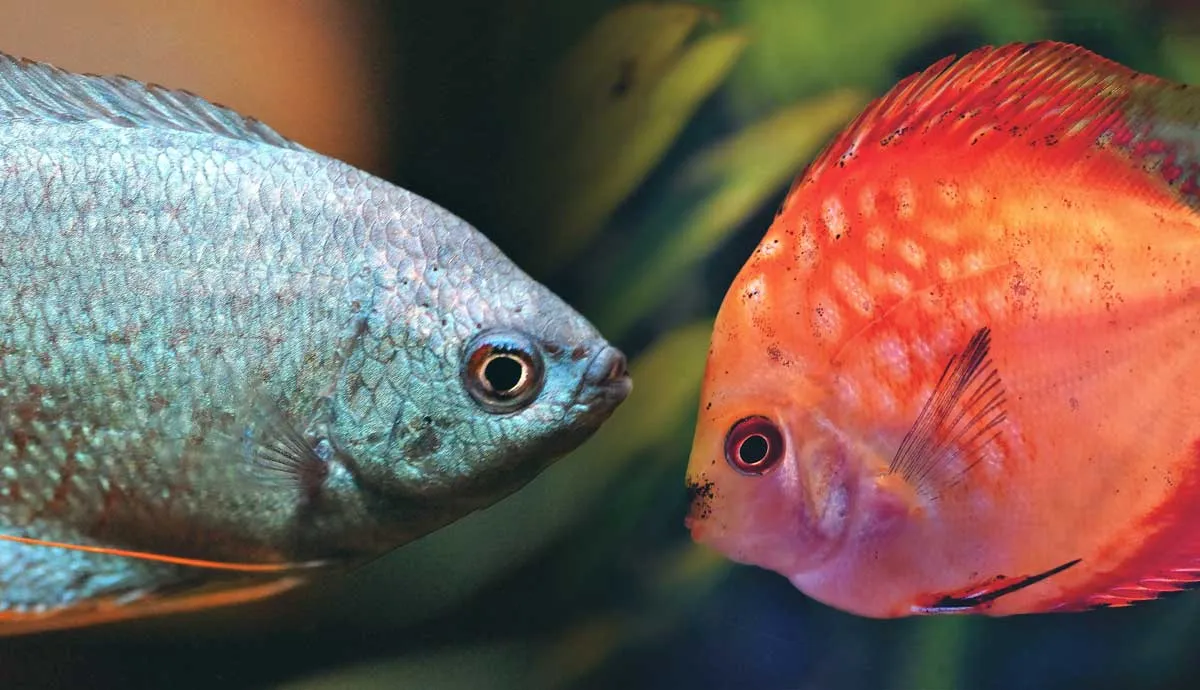As a fish owner, it’s your responsibility to keep your tank clean and healthy. If you leave the aquarium unchecked, waste will build up over time and eventually become toxic. And you can’t expect your filter to work constantly without maintenance.
Due to this, there are a number of things you need to do. Here we look at ten essential tasks with some of them needing to be done more often than others. If you follow these tips, then you're sure to have a beautiful and healthy aquarium.
1. Water Testing and Monitoring
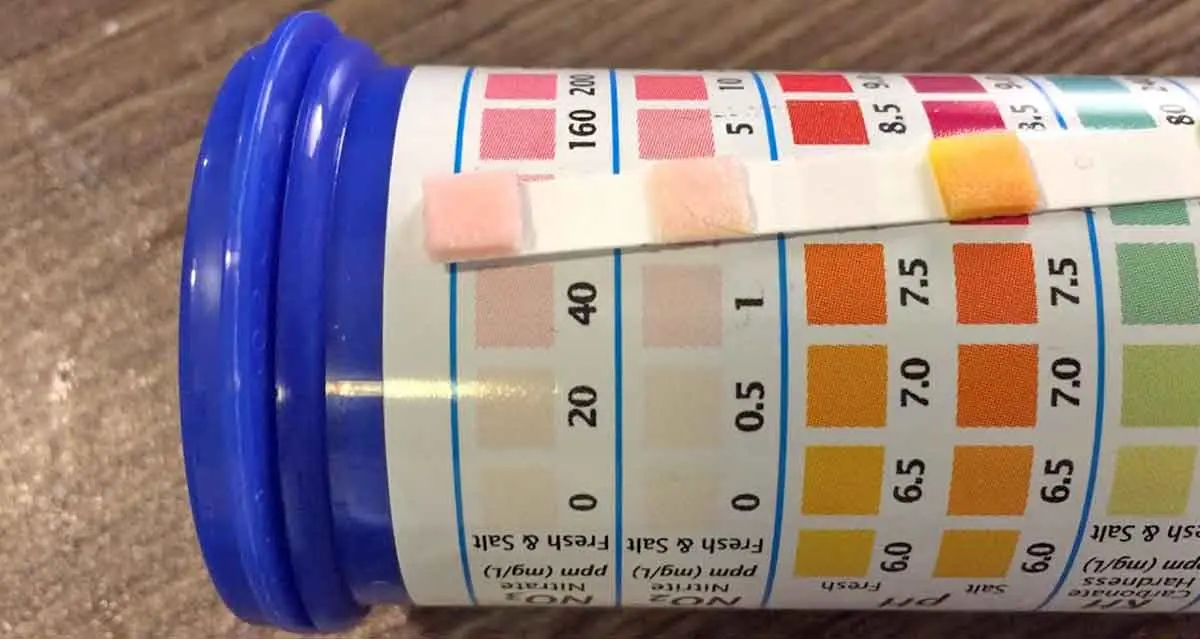
There are many different contaminants in water that can harm your fish. The most dangerous of these are ammonia, nitrite, and nitrate. However, the likes of pH, carbonate hardness, and chlorine can also be deadly at high enough levels.
To keep a well-balanced aquarium, you need to regularly check your water. If you think this sounds expensive, thankfully, you're wrong! You can buy water testing strips that are simple to use and highly effective. If you find a level is too high, then you can take steps to correct it.
For example, chemicals found in tap water can be neutralized by a water conditioner. The likes of ammonia, nitrite, and nitrate can be controlled by regular water changes. That brings us onto our next tip.
2. Water Changes

Routine water changes are a vital part of aquarium maintenance. The exact volume and frequency of these changes can alter depending on the size of your tank and the types/number of fish you have. A good basic rule to follow is to change 20% of the water every two weeks.
These changes are important for removing the accumulated waste. They also help to replace essential minerals and keep the water parameters stable. An important point to note in these changes is that you're not just removing water but also debris. Again, that leads nicely to your next essential task.
3. Gravel Vacuuming
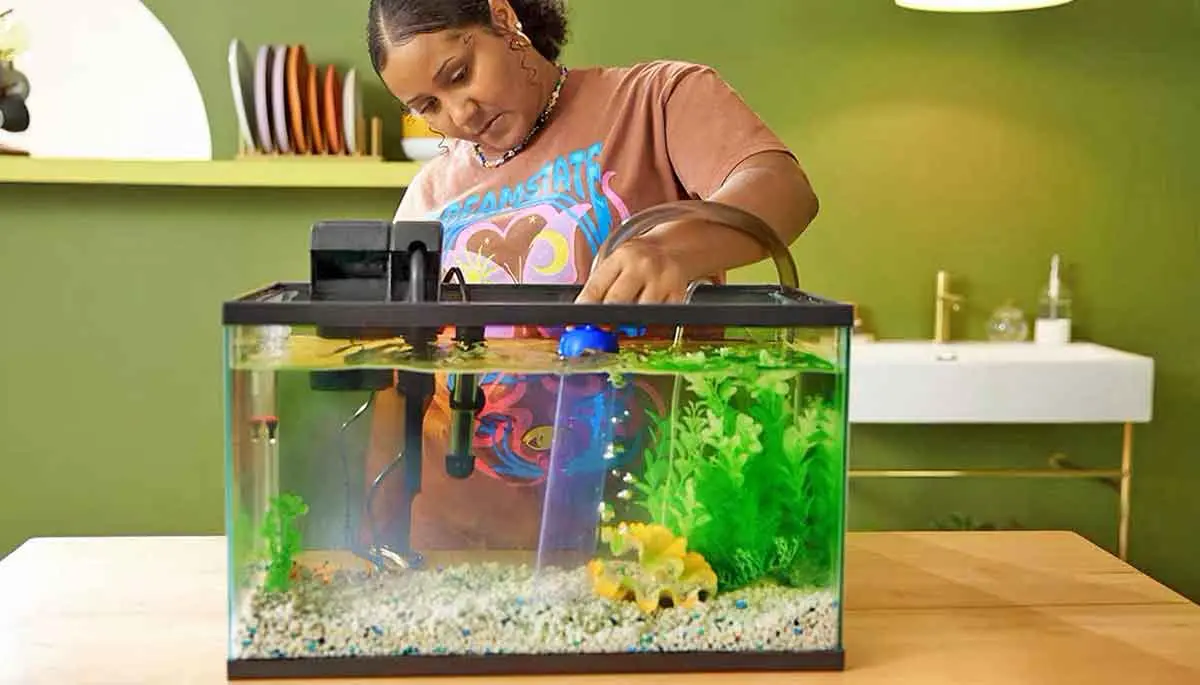
If you are using gravel for your substrate, then you need to vacuum it. Thankfully, this can be done hand-in-hand with a water change. This can be done by using a siphon whereby you place a tube in your tank to suck in water and place it deep into your gravel. It will help remove the water between the gravel and the waste that has settled at the bottom.
This will be organic waste (fish poop and uneaten food) that can make toxic chemicals quickly spike if not removed. It can also lead to cloudy water and a quick build-up of algae growth. By completing your water changes with a siphon, you're completing two essential tasks in one go.
4. Algae Control
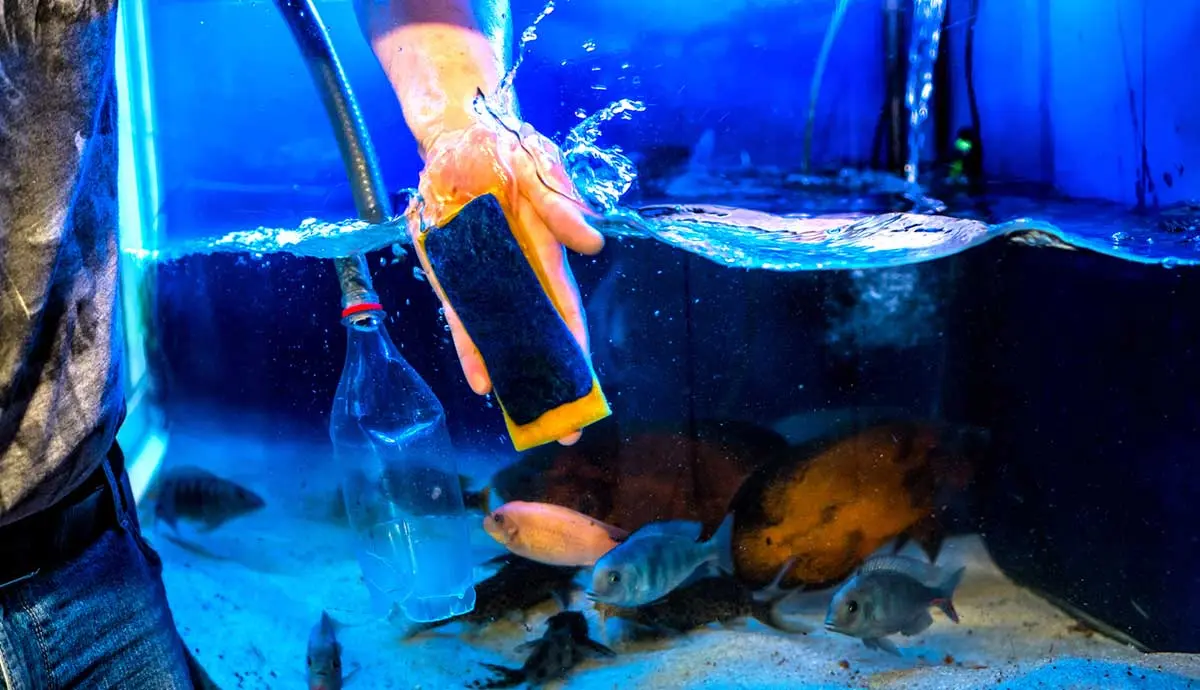
While some of these tasks are needed for a healthy aquarium, algae control is simply to keep it clean. Algae can be beneficial in small amounts as it supports healthy bacteria. However, high levels are not only ugly but can often be a sign of a water imbalance.
There are many ways to reduce algae growth, with one of the main ones being to reduce the amount of light the tank is getting. This includes not placing your tank in direct sunlight and ensuring to turn off lights at night.
Other methods include regular cleaning, water changes, not overfeeding, and keeping live plants. You can even add algae-eaters to your tank to do the job for you. Some types of catfish are perfect for this task, as are some snails and shrimps. Other useful fish are Siamese or Chinese algae eaters.
5. Filter Maintenance
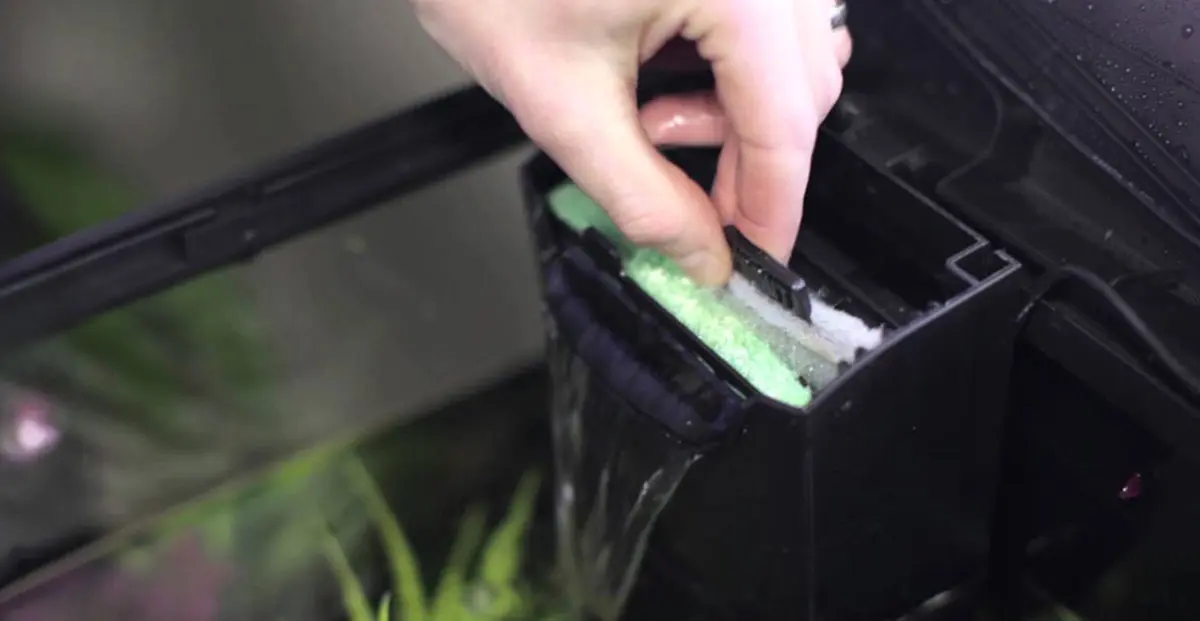
As we mentioned in the intro, filters don't work indefinitely. In simple terms, they get full. They will reach a point where they contain so much debris that they no longer can remove any more. In addition, the cartridges/media that can be placed in them to keep stable parameters stop being effective.
To ensure that it stays in optimal condition, the filter should be removed frequently and cleaned to ensure that its vent holes remain clear and the motor unrestricted. If there is filter media, such as a sponge, this should be lightly rinsed. You don’t want it to be completely clean, as this can remove beneficial bacteria.
If your filter contains cartridges or chemical media, these should be replaced as per the manufacturer's instructions. Keeping your filter clean not only keeps your tank thriving put prevents you from having to do extra maintenance in other areas of the tank.
6. Aquarium Scaping
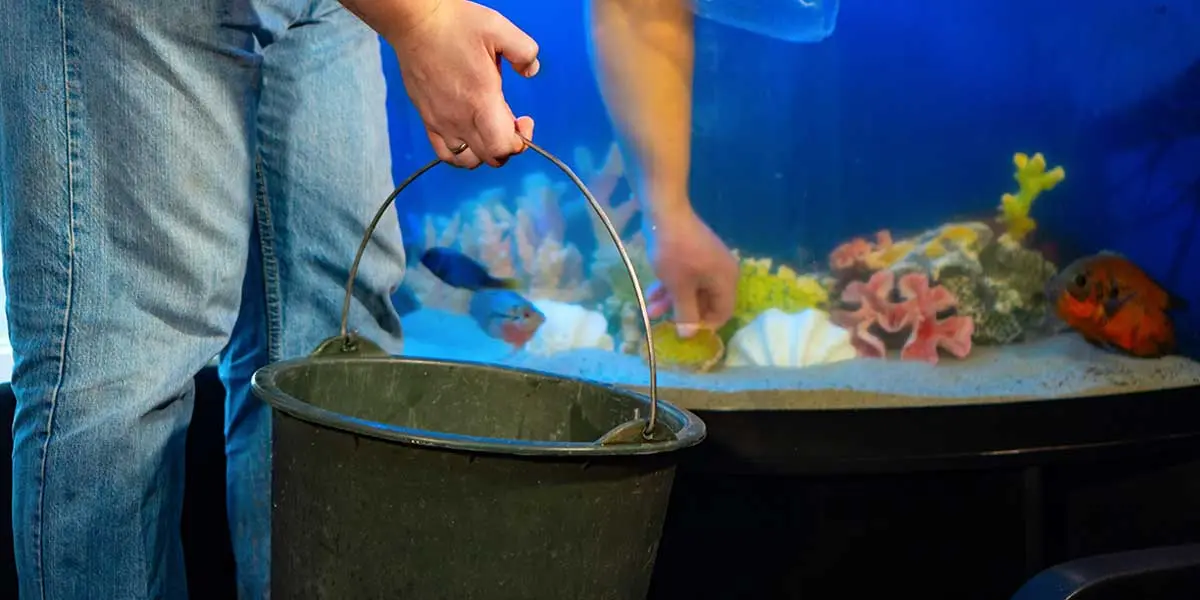
Aquascaping is the process of arranging your plants, material, and decorations within your tank. You may be wondering that relevance this has to keeping a clean and healthy aquarium. The truth is the adding the right pieces can have a positive impact on your fish.
Many types of fish need places to hide so they don’t feel stressed. Other fish like to set territorial boundaries. Aquarium scaping gives them a more natural habitat and allows them to feel comfortable in the tank. Of course, you have the added benefit of improved aesthetic appeal.
7. Avoid Overfeeding
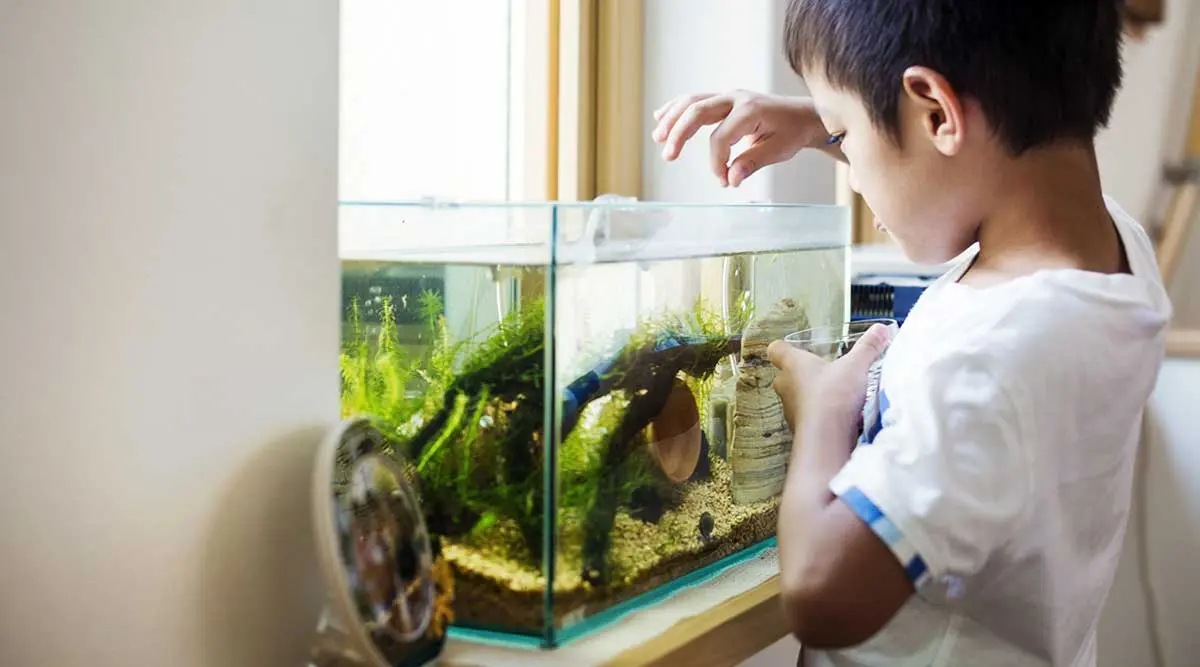
You should be giving your fish high-quality food that is suitable for them. Along with this, you should avoid the temptation to overfeed. This will lead to excess waste production and make water quality issues more common.
High-quality flakes are usually sufficient for small fish, but for larger species, you should look into pellets, frozen food, and live food. It’s best to offer them small, frequent meals rather than dumping a large amount of food in the tank.
8. Quarantine

Before adding any new fish into the tank, they should be quarantined in a separate tank or container. This is because if they are carrying a disease, they may spread it to the rest of your fish.
Placing them in quarantine allows you to observe the new fish, and medicate if necessary. In I similar vein, you want to avoid introducing any outside bacteria to your tank and use your fish tank supplies solely for fish use.
9. Water Conditioner and Additives

We touched on this in our first essential task, but water conditioners and additives can be important. This is especially true for those who use tap water that contains a high level of chlorine or heavy metals.
Other additives can introduce vitamins or safe fertilizer if you have live plants. If you use tap water for water changes, it's a good idea to test it first. This will give you a good idea of what conditioners and additives you may need and how much to use.
10. Observing and Responding to Changes
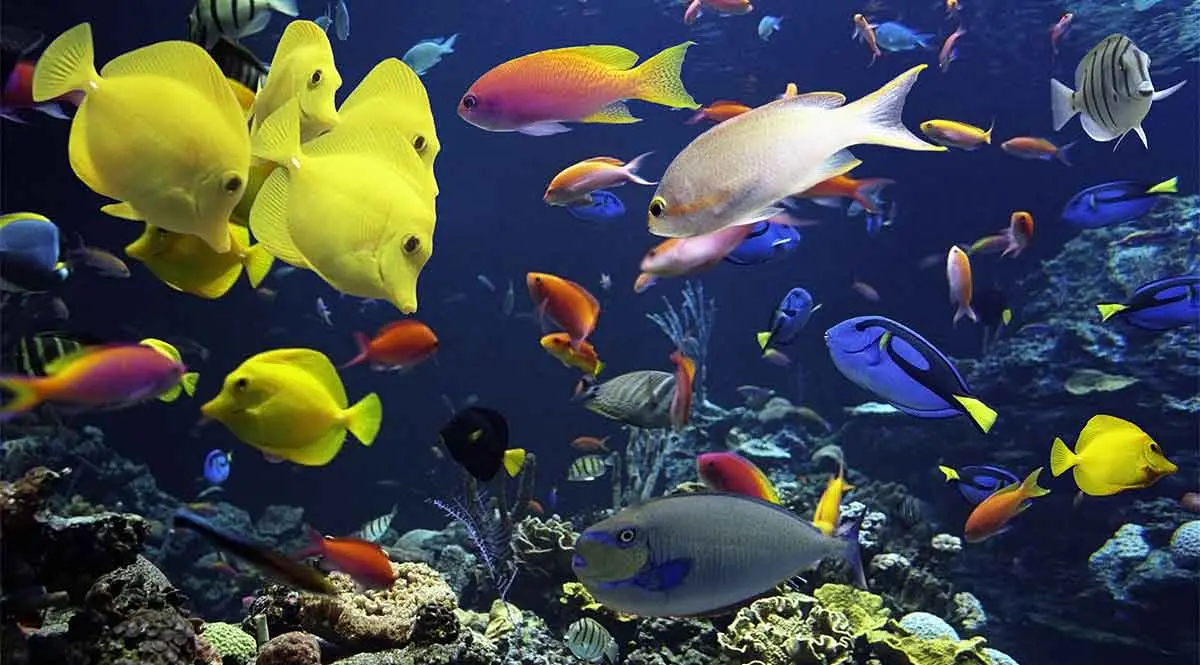
Giving specific tips for tank maintenance is difficult, as every tank is different. Many factors can change your nitrogen cycle, fish behavior, algae growth, water quality, and much more. This is why it’s important to monitor your fish.
Look for any signs of stress, illness, or aggression. If you notice any issues, then take steps to change it. A water change may be required or you may need to take more drastic steps such as treating disease or separating aggressive fish.
